Missions to Uranus
| Mission |
Country |
Launch Date |
Arrival Date |
Type |
Encounter Characteristics |
|
| Voyager 2 |
USA |
August 20, 1977 |
January 24, 1986 |
Flyby |
7000 images of Uranus, its rings, and its satellites |
 An Overview of Space Exploration
An Overview of Space Exploration
You might also be interested in:
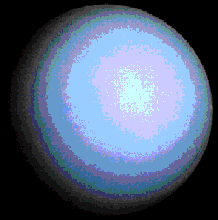
The plain aquamarine face of Uranus confirms the fact that Uranus is covered with clouds. The sameness of the planet's appearance shows that the planet's atmosphere is mostly composed of one thing, methane.
...more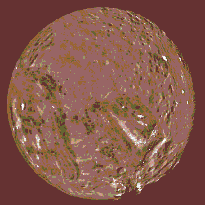
Uranus has // Call the moon count function defined in the document head print_moon_count('uranus'); fascinating moons and a complicated ring system. The ring is a completely different form of ring than
...more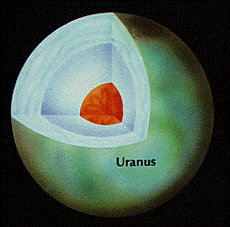
The Giant planets do not have the same layered structure that the earthlike planets do. Their evolution was quite different than that of the earthlike planets, and they have much more gas and ice inside.
...more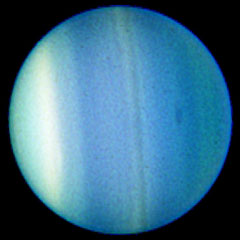
Uranus is the tilted planet. The axis through its North and South Poles is tilted by 98°. In other words, Uranus is lying on its side! That's not all - the magnetic field of Uranus is tilted, too. The
...more
The giant planets have definitely changed since their formation. But how much remains to be seen. Most of the original air of the giant planets remains in place. (The earth-like planets lost most of their
...more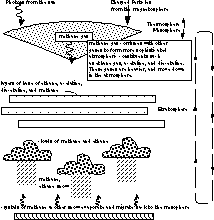
Uranus' atmosphere is made of methane, a medium sized molecule. At the uppermost reaches of the atmosphere, methane gas breaks apart due to energy from the sun and from the magnetosphere. The remins of
...more
Motions of air in the atmosphere include wind. The major winds in the Uranian atmosphere are zonal winds, which have zones blowing west and belts flowing east. Motion of air in the atmosphere can also
...more
This is the temperature profile of Uranus' entire atmosphere. The horizontal lines indicate the boundaries between the troposphere, the stratosphere, the mesosphere, and the thermosphere.
...more
 An Overview of Space Exploration
An Overview of Space Exploration












